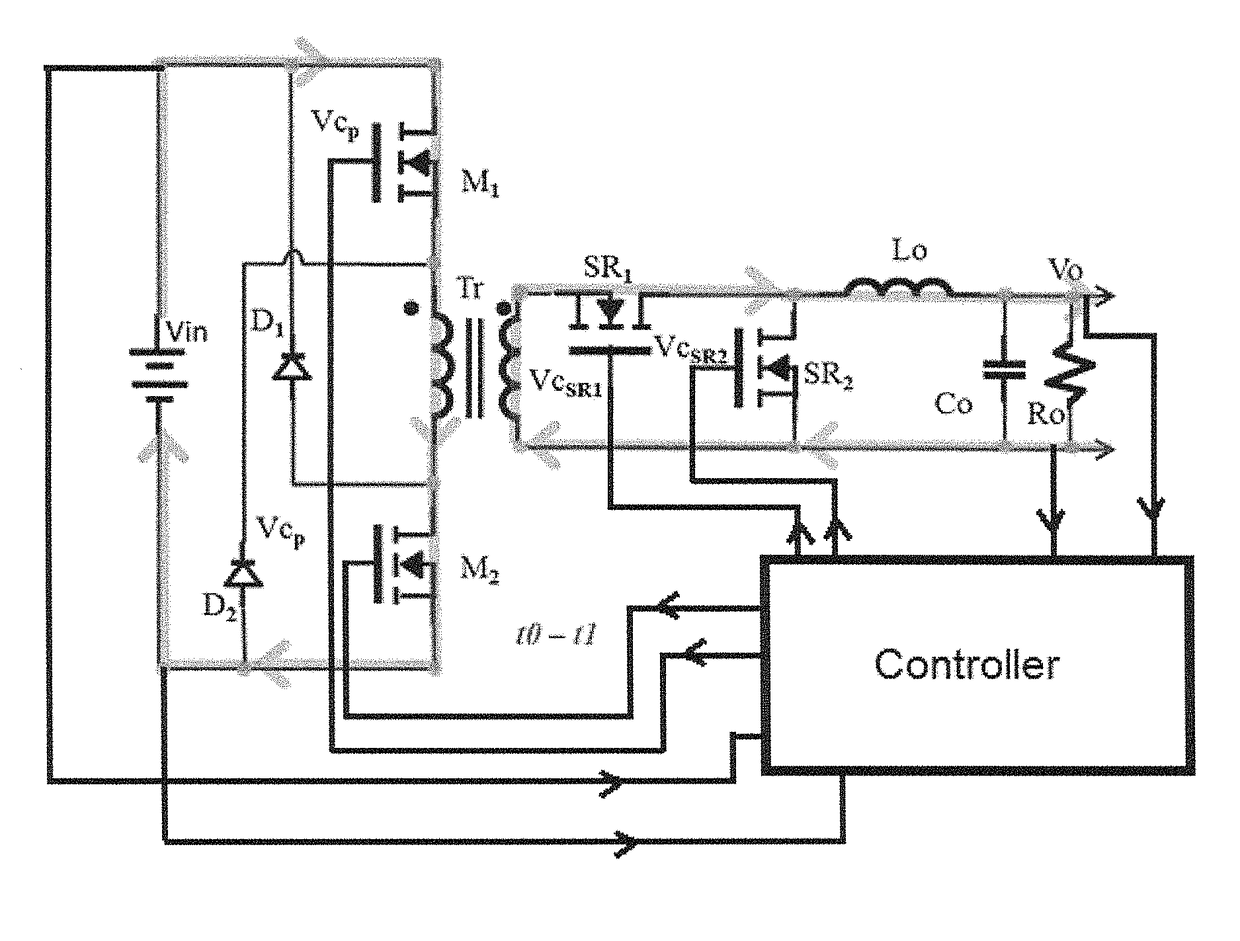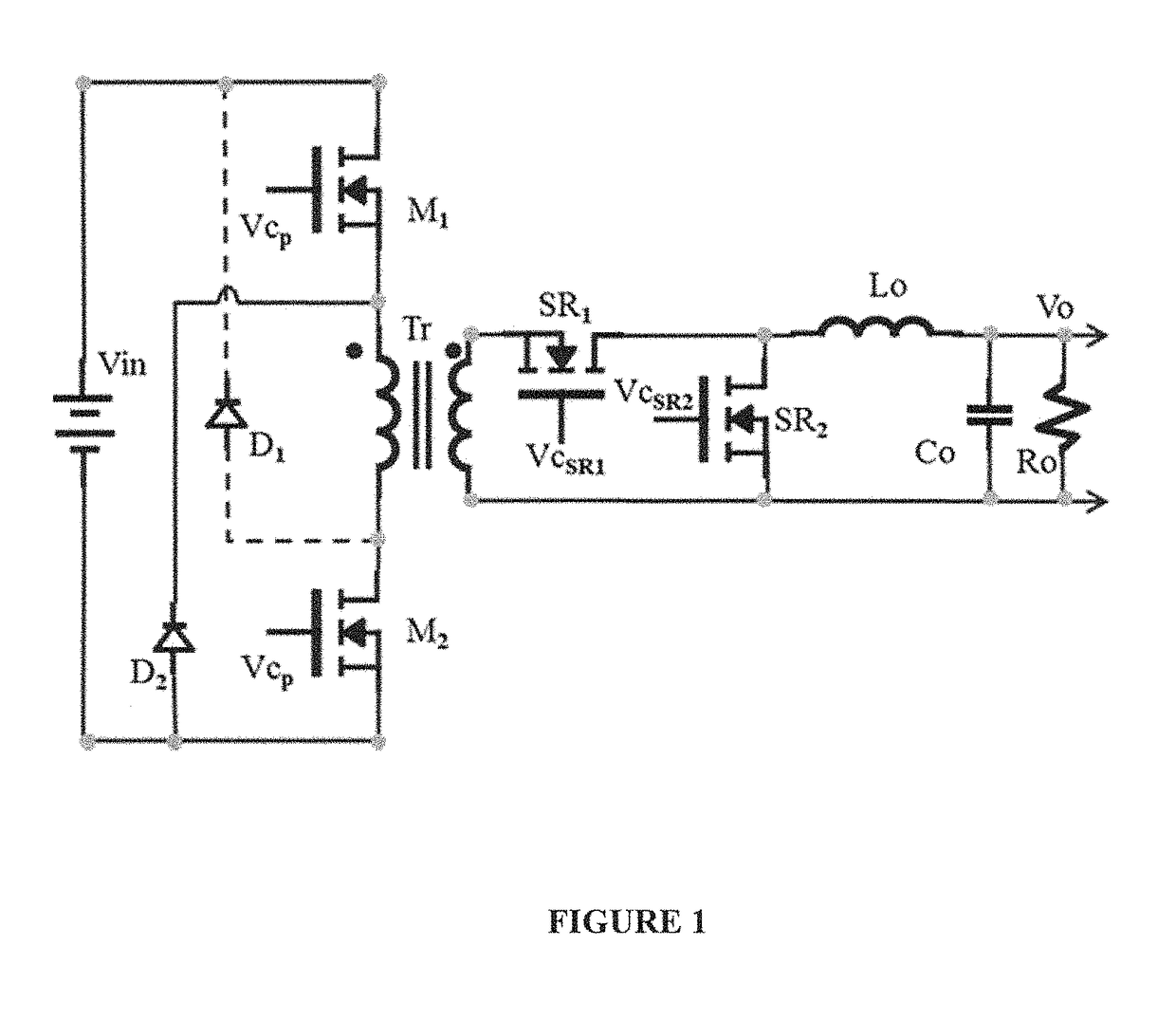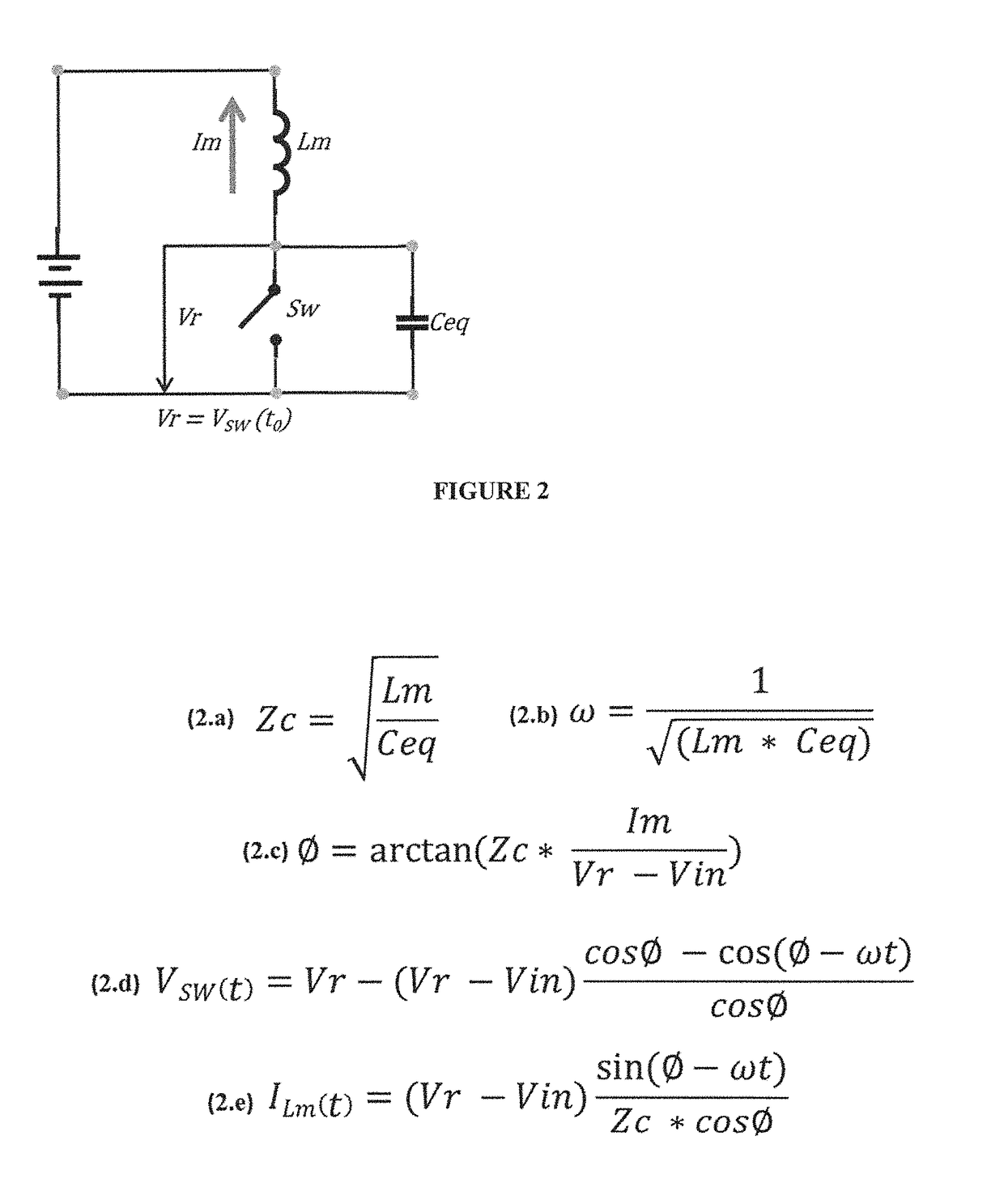Soft transition on all switching elements two transistors forward converter
a technology of forward converter and switching element, which is applied in the direction of electric variable regulation, process and machine control, instruments, etc., can solve the problems of causing noise in the system, and affecting the efficiency of the converter, so as to eliminate the loss of reverse recovery, eliminate the loss, and the effect of low leakage inductan
- Summary
- Abstract
- Description
- Claims
- Application Information
AI Technical Summary
Benefits of technology
Problems solved by technology
Method used
Image
Examples
Embodiment Construction
[0026]As described above, the present invention provides a method for providing a forward converter (e.g. a two transistors forward converter) with lower switching losses. Its principles are described herein in connection with a two transistors forward converter, and from that description the manner in which the present invention can be applied to various forward converters will be apparent to those in the art.
[0027]The mode of operation in this invention to an embodiment of a two transistors forward converter is described in FIG. 4, FIG. 5, FIG. 6, FIG. 7, FIG. 8, FIG. 9, FIG. 10 and FIG. 11. In FIG. 5 are depicted the key waveforms, Vcp the drive signal for M1 and M2, the current through M1 and M2, Vcsr1 and Vcsr2 which are the control voltages for SR1 and Sr2, The voltage across the primary switchers in FIG. 5e, The magnetizing current in FIG. 5f, the current through the SR1 and the current through SR2.
[0028]We have identified four modes of operation of this embodiment.
[0029]To-T...
PUM
 Login to View More
Login to View More Abstract
Description
Claims
Application Information
 Login to View More
Login to View More - R&D
- Intellectual Property
- Life Sciences
- Materials
- Tech Scout
- Unparalleled Data Quality
- Higher Quality Content
- 60% Fewer Hallucinations
Browse by: Latest US Patents, China's latest patents, Technical Efficacy Thesaurus, Application Domain, Technology Topic, Popular Technical Reports.
© 2025 PatSnap. All rights reserved.Legal|Privacy policy|Modern Slavery Act Transparency Statement|Sitemap|About US| Contact US: help@patsnap.com



